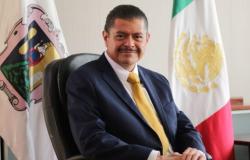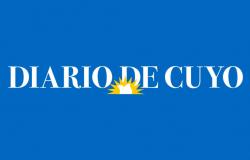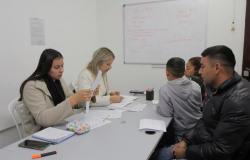They recognized Dionisio Díaz post-mortem
Within the framework of a new anniversary of the Directorate of Recreational and Sports Activities (DARD), ceramist-sculptor Dionisio Diaz was declared Outstanding Post Mortem Citizen “City of Orange Blossoms Distinction”. It is worth remembering that this artist was in charge of making the Llalliy sculpture, which was recognized as an emblem of the leading institution of sport and society in Rioja.
His career and performance led him to become one of the greatest references of Riojan culture and national art.
To support this project, the artist’s origins were mentioned, modeling clay for pottery at school; Then his studies began at the National Technical School of Ceramics No. 1, where he began the scientific study of ceramics, especially in physics and chemistry, graduating with the title of Expert in Ceramics.
He was awarded a scholarship and awarded by the National Council of Technical Education, to hold the position of Professor of Ceramics, in the chairs of Technology, design, and Molding. His works captured and disseminated the culture, tradition, customs, stories, legends and religion of our province of La Rioja and the north of our country.
“Thus it also became one of the main references of Latin American syncretism, representing the historical process of transculturation between the European and Latin American continents. His creations were the object of inspiration of poets and different artists who admired him, having 59 songs and poems dedicated to him; participating in films and numerous videos, monographs and theses for educational purposes,” mentioned Councilor Alberto Centeno, promoter of the norm.
Through councilor Alberto Centeno, the Llalliy was established as an emblem that represents a leading institution in society and sports in La Rioja: the Directorate of Recreational and Sports Activities (DARD).
Due to this initiative, it was learned that in 1974, Professor José Alfredo Ferrari, founder of the DARD, entrusted Dionisio Díaz and Margarita Díaz de Díaz with being in charge of finding the identity of the emblem that would later be used as a prize.
To carry it out, within the study and research process, they went to the INCA HUASI museum to collect information. It was at that time where they found and studied the Quechua to Spanish dictionary, according to which the word that most resembled “triumph” or “winner” is the Quechua word “Llalliy.” So they ended up baptizing their work with this name, which would later be awarded as “El Llalliy Prize.”
“In the creation of the image, there are elements that make it up, referring to our provincial and sports culture. The “Llalliy” has a sporty profile and in its hand, instead of a torch with the votive flame, it has a “puco”, which was chosen because it was the first utilitarian element of the Diaguitas, which symbolizes life and food. , because this was a creation that was used to collect water from the river,” they explained in the foundations of this rule, which was approved by the entire body of councilors.





